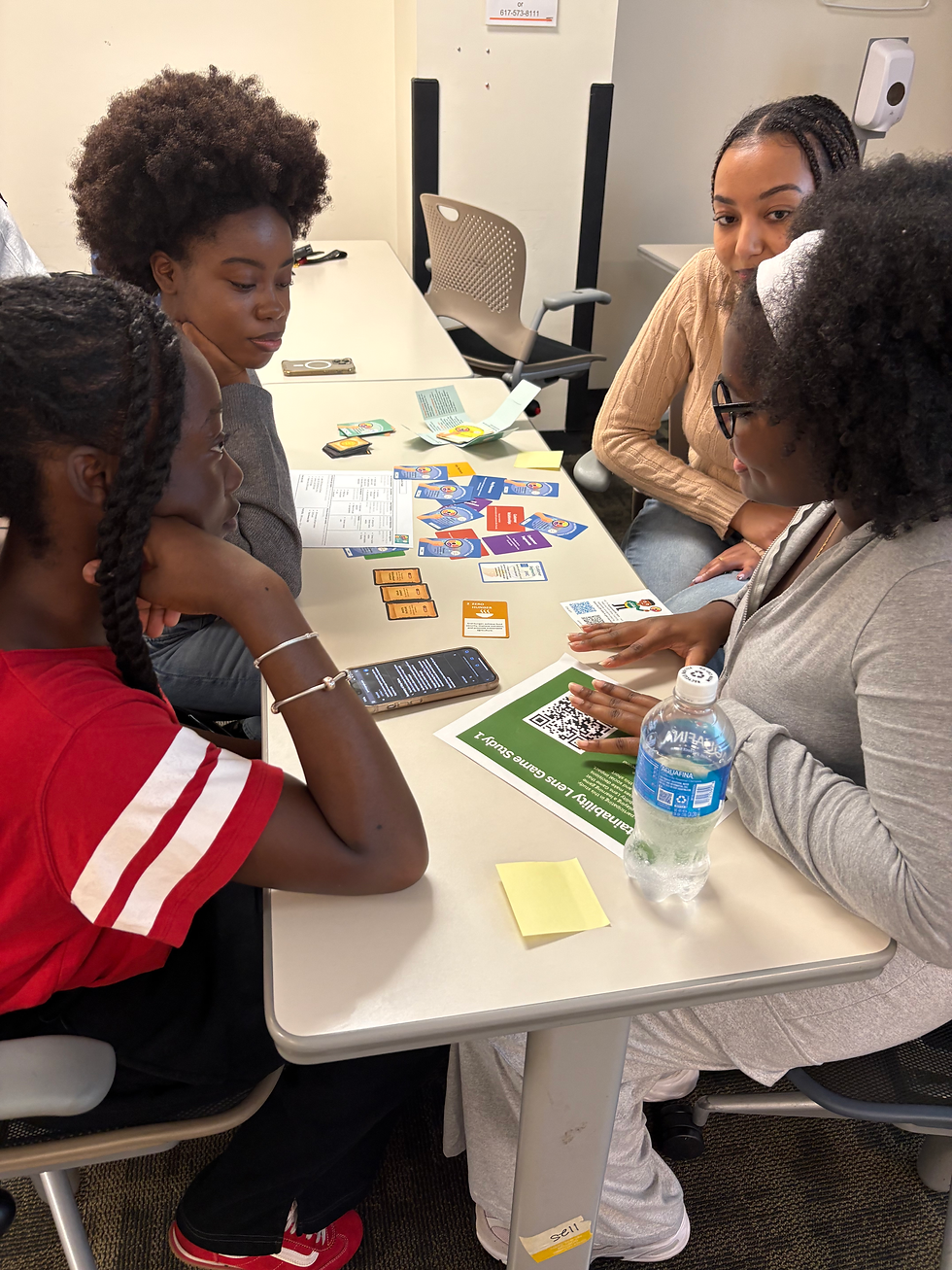How to Master the Duo Deck in Sustainability Lens Card Games: Unlocking the Full Potential of Sustainability
- Tamara Stenn

- May 24, 2024
- 3 min read
Updated: Feb 7
In our rapidly changing world, sustainability is a vital topic we can no longer ignore. Issues like climate change, resource depletion, and social inequality demand our attention. Engaging with these challenges through interactive methods can be both educational and enjoyable. The Sustainability Lens Card Games provide an excellent opportunity to explore these issues. The Duo Deck offers a deeper understanding of sustainability concepts and the chance to strategize around real-world challenges.
This post will guide you through mastering the Main and Advanced Decks - present in the Duo Deck, helping you leverage them to promote awareness, foster collaboration, and enhance critical thinking.
Building Team Dynamics
To excel in the game, create defined roles within your group. Encourage diversity in opinions; different perspectives can lead to innovative solutions. For example, if one player takes on the role of resource manager while another focuses on policy, they can combine their insights for a comprehensive strategy.

Foster open communication during gameplay. Discuss the insights gained from each card as a group. This collaborative dialogue enriches the learning experience and builds camaraderie, ensuring that every team member feels valued.
Leveraging Collaborative Learning
One of the most exciting features of the Sustainability Lens Card Games is its focus on teamwork. Players must work together to address sustainability challenges, mirroring the real-world need for collaborative efforts.
Developing Critical Thinking
Critical thinking is crucial in navigating the scenarios presented by the cards. Players need to assess situations, evaluate choices, and make sound decisions.
Strategies for Enhancing Critical Thinking
To sharpen your critical thinking abilities, consider these actions:
Ask Questions: Challenge the reasoning behind decisions. For instance, if a specific policy is suggested, explore why it was chosen and what alternatives exist.
Simulate Scenarios: Create imaginative scenarios based on real-world situations, such as what might occur if a key resource became scarce. Analyze how this would impact community health and policy-making.
Debrief Post-Game: After a game session, hold a reflective meeting to discuss lessons learned. This process helps cement the knowledge gained through gameplay into actionable insights.
Engaging with Real-World Issues
The Sustainability Lens Card Games highlight various global sustainability challenges. By engaging with these issues in a game, players enhance their understanding of the complex nature of such challenges.
Connecting Gameplay to Real-World Applications
To see the practical value of the game, align it with current sustainability literature, case studies, start-ups, or actual businesses. For instance, relate the challenges faced in the game to actual climate policies or sustainable resource practices in your community.
Focusing on specific themes, such as renewable energy solutions or waste management, can spark productive discussions. Use the cards to initiate dialogues about local initiatives or major legislative efforts in environmental conservation. This connection not only deepens understanding but also inspires action toward sustainability.

Maximizing Fun while Learning
While sustainability topics are serious, the enjoyment of the game should not be overlooked. Creating a lively atmosphere enhances engagement and makes players more open to learning.
Gamifying the Experience
Timed Challenges: A two-minute response time to specific tasks encourages quick thinking and creativity.
Reward Systems: Earn points based on unique solutions and effective teamwork, fostering friendly competition.
Rotate Leadership Roles: Allow different players to guide discussions during the game. This change enhances player engagement by offering varied perspectives.
Embracing a Sustainable Future Together
Mastering the Sustainability Lens Card Games opens a fun and insightful avenue for exploring sustainability concepts while nurturing collaboration and critical thinking.
By engaging with sustainability through interactive play, you not only broaden your understanding but also equip yourself and others with essential skills to address environmental challenges. Consider using these games in classrooms, workshops, or community events to spark discussions and promote innovative solutions.
As you share your insights and experiences, advocate for new resources or expanded game editions. Together, let's work toward a more sustainable future, one game at a time.
Here’s a closer look at the deck's components:
Card Types: 9 Policy cards, 9 Resource cards, 9 Health cards, 9 Exchange cards, 9 Landing cards, 16 Challenge cards, 17 Sustainable Development Goal Cards, Description Cards, and 64 mini coin cards. This variety stimulates diverse gameplay experiences.
Play Duration: Ranging from 45 to 90 minutes, the game fits perfectly into workshops, classrooms, or group studies.
Age Suitability: Aimed at ages 12 and above, it engages school students and adults alike.
Players: Suitable for 2 to 16 players, the Duo Deck adapts easily to different group sizes.
This well-rounded setup fosters an interactive learning environment, moving beyond conventional teaching methods.



Comments